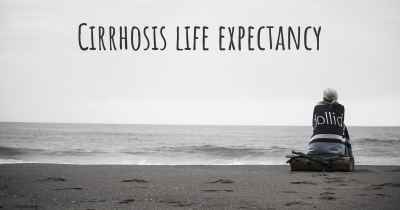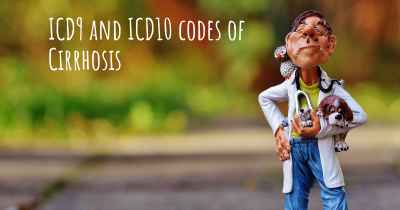Living with Cirrhosis. How to live with Cirrhosis?
Can you be happy living with Cirrhosis? What do you have to do to be happy with Cirrhosis? Living with Cirrhosis can be difficult, but you have to fight to try to be happy. Have a look at things that other people have done to be happy with Cirrhosis

Living with Cirrhosis
Cirrhosis is a chronic liver disease that occurs when healthy liver tissue is replaced by scar tissue, leading to impaired liver function. While living with cirrhosis can be challenging, there are several strategies and lifestyle changes that can help manage the condition and improve quality of life.
1. Follow a Healthy Diet
Eating a balanced and nutritious diet is crucial for individuals with cirrhosis. It is important to limit sodium intake to prevent fluid retention and swelling. Include plenty of fruits, vegetables, whole grains, and lean proteins in your diet. Avoid processed foods, fatty foods, and alcohol, as they can further damage the liver.
2. Manage Fluid Retention
Cirrhosis can cause fluid to accumulate in the body, leading to swelling in the legs, abdomen, and other areas. Limiting sodium intake, as mentioned earlier, can help reduce fluid retention. Additionally, your doctor may prescribe diuretics to help eliminate excess fluid. It is important to monitor your weight daily and report any sudden weight gain to your healthcare provider.
3. Avoid Alcohol and Smoking
Alcohol is extremely harmful to the liver, especially when it is already compromised by cirrhosis. It is essential to completely avoid alcohol consumption to prevent further liver damage. Smoking can also worsen liver function and increase the risk of complications. Quitting smoking is highly recommended for individuals with cirrhosis.
4. Take Medications as Prescribed
Depending on the severity of cirrhosis and its underlying causes, your doctor may prescribe medications to manage symptoms and slow down the progression of the disease. It is crucial to take these medications as prescribed and follow up regularly with your healthcare provider to monitor their effectiveness and adjust the dosage if needed.
5. Get Vaccinated
Individuals with cirrhosis have a weakened immune system, making them more susceptible to infections. It is important to stay up to date with vaccinations, including hepatitis A and B, influenza, and pneumococcal vaccines. These vaccines can help prevent additional liver damage and complications.
6. Engage in Regular Exercise
Regular physical activity can help improve overall health and well-being, even for individuals with cirrhosis. Engage in low-impact exercises such as walking, swimming, or cycling, as recommended by your healthcare provider. Exercise can help maintain a healthy weight, improve circulation, and strengthen muscles.
7. Manage Mental Health
Living with a chronic condition like cirrhosis can take a toll on mental health. It is important to seek support from loved ones, join support groups, or consider therapy to cope with the emotional challenges. Stress management techniques such as meditation, deep breathing exercises, and engaging in hobbies can also be beneficial.
8. Regularly Monitor Liver Function
Regular monitoring of liver function is essential for individuals with cirrhosis. This involves routine blood tests to assess liver enzymes, bilirubin levels, and other markers of liver health. Your healthcare provider may also recommend periodic imaging tests, such as ultrasounds or MRIs, to evaluate the liver's condition.
9. Prevent Infections
Due to the compromised immune system associated with cirrhosis, it is important to take precautions to prevent infections. Practice good hygiene, wash hands frequently, and avoid close contact with individuals who have contagious illnesses. It is also advisable to avoid raw or undercooked foods that may harbor bacteria.
10. Stay Informed and Involved
Education is key to managing cirrhosis effectively. Stay informed about the condition, its causes, symptoms, and treatment options. Be an active participant in your healthcare by asking questions, seeking second opinions if necessary, and staying engaged in your treatment plan.
Remember, cirrhosis is a serious condition that requires ongoing medical care and lifestyle modifications. It is important to work closely with your healthcare provider to develop a personalized management plan that suits your specific needs.
Posted May 19, 2017 by Rocio 2900








